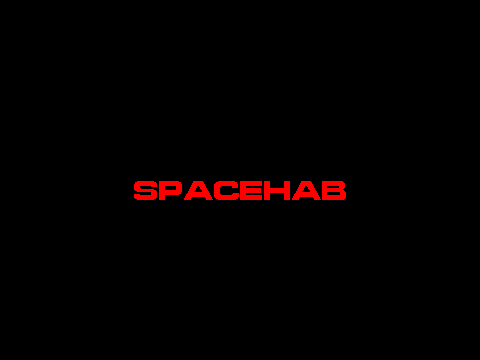Slide 48(B) of 99
Notes:

Founded by Bob Citron in 1982, Spacehab Inc. is the only entrepreneurial company to
successfully develop a commercial manned spaceflight module. Spacehab was initially formed to develop
a 5000kg pressurized module derived from ESA's Spacelab. The 3 meter long Spacehab module is
carried inside the Shuttle cargo bay and provides 28.3 cubic meters of expanded habitable space
for experiments and logistics transport to space stations. NASA agreed to sign a memorandum of
understanding in December 1985, but its agreement
with the European Space Agency prevented it from using competitive systems such as Spacehab's
before 1989. Consequently, the company signed contracts with the main European Spacelab
contractors (MBB/ERNO and Aeritalia) to take a share in Spacehab as well as serve as prime
contractors. By 1986 some $1 million had been
spent on the project and the company initiated negotiations with NASA, claiming some 350
customers had expressed interest in using the module. NASA turned down a request from Spacehab
for Shuttle launches on a deferred payment basis in 1987, and also briefly considered
cancelling other commercial agreements with Space Industries Inc. and 3M as well. The
agency informed Spacehab that no launches would be available before 1995 since the Shuttle
was extremely overbooked following the Challenger accident. Spacehab then tried to sign up
priority customers such as the Defense Department which would have forced NASA to assign
Spacehab to an earlier flight. However, President Reagan's National Space Policy from
February 1988 specifically ordered NASA to "make best efforts" to launch Spacehab's $65-70
million cargo module on the Shuttle in the early 1990s. Federal regulations required NASA
to open the expansion module to competition but Spacehab provided the only response by the
30 April 1990 deadline. NASA then agreed in principle to launch six commercial Spacehab flights
by 1995, but the company initially found it difficult to raise capital.
Spacehab finally signed a contract with NASA in December 1990 to lease two-thirds
of the payload space for $184 million. An important mission was hardware tests for Space
Station Freedom; the module can carry up to four Space Station-type experiment racks.
NASA agreed to launch Spacehab eight times at a cost of $28.2 million per
flight. More than $20 million had already been spent on the project by this time, and Chase
Manhattan Bank agreed to provide a further $75 million after Spacehab offered to buy insurance
if Congress cancelled the project. The company paid a 20% premium. Spacehab was almost cancelled
in January 1992 when the House and Senate panels with NASA oversight indicated Congress only would
pay $25 million in 1992 and $35 million in 1993. NASA had requested $39 million and $50 million,
respectively. The House and Senate reached a compromise in March which allocated a $40 million
budget for Spacehab in Fiscal Year 1992, and the investors (who had spent $44 million at that
point plus another $50 million borrowed from Chase Manhattan Bank) said they were satisfied
with the project's progress. The company then unveiled its first Spacehab module in May 1992.
The partners expected to make a profit after six flights, which had been bought by NASA in
1990. Under the agreement, Spacehab bought launch services from NASA and leased capacity to
users for $1.76 million per experiment locker. Each module has 50 lockers and a dedicated
flight thus costs $79.8 million. The first flight took place in June 1993, but with 98% of
the facility occupied by experiments managed and paid for by NASA.

Spacehab expansion modules for the Space Station. The company also investigated concepts
other than the basic augmented Shuttle module. In 1986, Spacehab estimated a basic module
would cost $15 million,
rising to $40 million for a not-yet-approved advanced model that would have contained thermal
control and augmented power & life support systems. The total cost of three basic modules
was to be $50 million and Spacehab proposed a first mission in 1988 followed by three in 1989
and four in 1990. Proposed missions included Space Station technology testing and augmented
"construction shack" living quarters for assembly workers. NASA's problems with the Shuttle
and Space Station forced the company to delay its first launch until 1994 while the space station
module had to be cancelled.
Shuttle/Spacehab rendezvouses with the Mir space station. NASA signed a $54-million
contract with Spacehab Inc. in August 1995 for Shuttle/Mir logistics flights. The deciding factor
was Spacehab's faster turnaround between missions. Spacehab has remained an active participant
in the Shuttle/International Space Station program. The company proposed a new $30-40 million
docking/logistics double module that would make it possible for the Shuttle to reboost the
Space Station by 16km per docking as opposed to just 4.8 kilometers. Spacehab is also collaborating
with Russia on a commercial
"Enterprise" laboratory module.
















